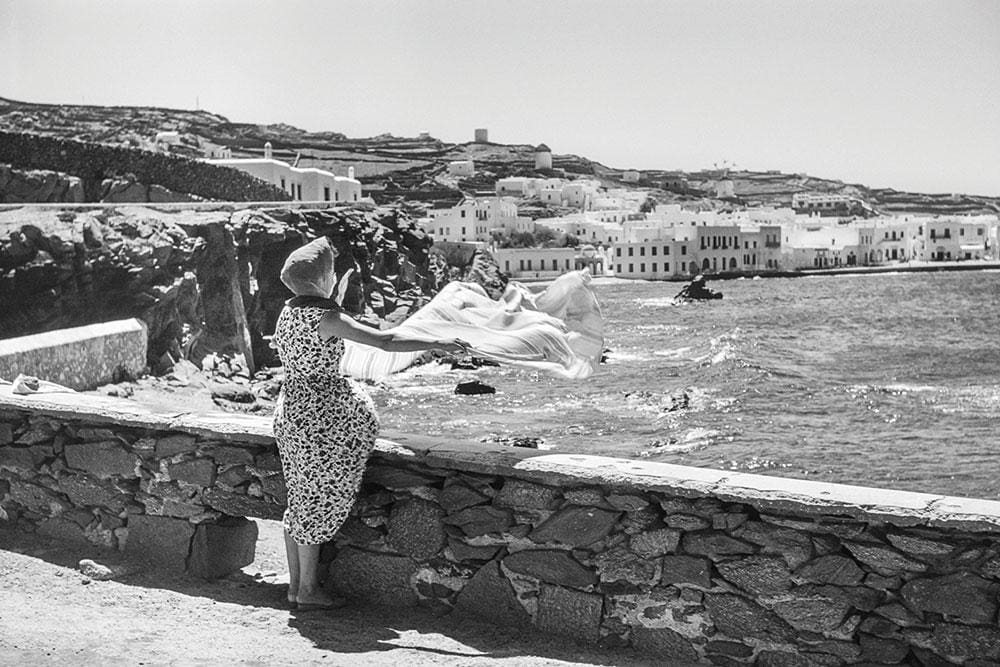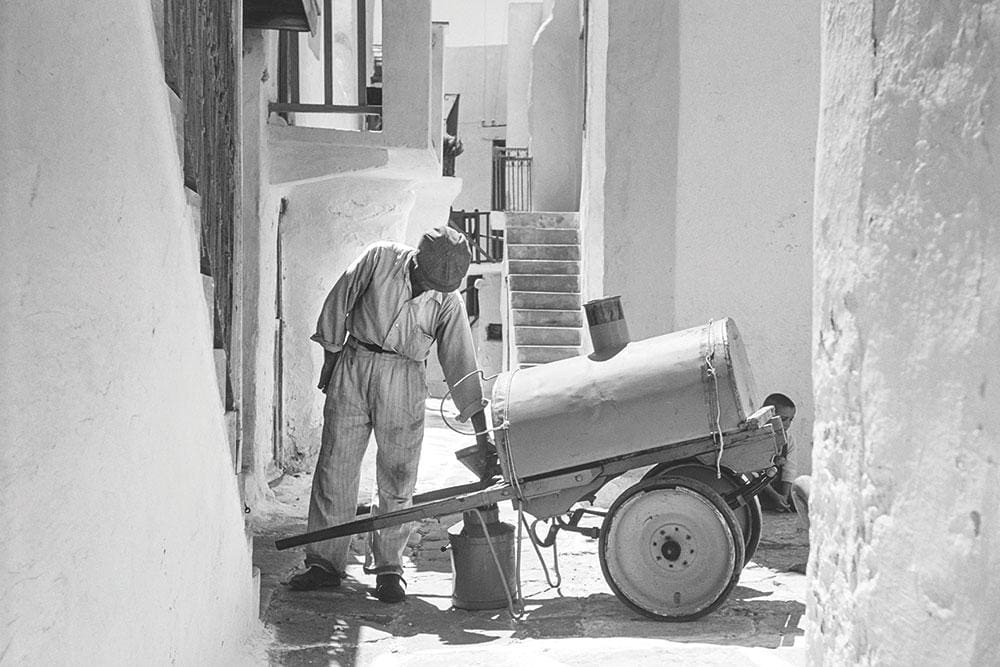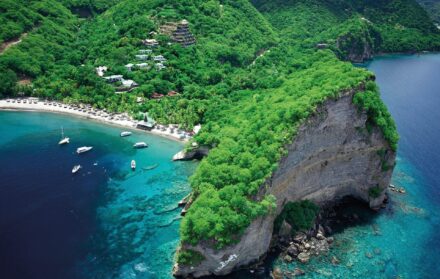
Mykonos: a Greek tragedy?
‘Mykonos f**ks Ibiza’ read neon T-shirts in the island’s tacky souvenir shops. It doesn’t. Ibiza has been up its own arse for years. Mykonos was the anti-Ibiza. Unpretentious, fair-priced fun – that was the appeal

On his first visit to Mykonos in 1955, photographer Robert A. McCabe found the island to be largely untouched, with no cars, airport, motorbikes, plumbing, and scarcely any electricity. The photos that accompany this article were taken from that initial trip and a subsequent project McCabe shot for National Geographic in 1957. They appear within Mykonos: Portrait of a Vanished Era, a photographic book published by Abbeville Press in March 2019, which is available through Amazon and Waterstones.
That Greece has a money problem is no secret. A decade after Moody’s downgraded its sovereign debt to junk status, this year the country’s inflation rate is among the highest in the world. Boffins at Bloomberg currently rate its economy as the fifth most miserable on the planet. Yet as real wages on the mainland continue to stagnate – youth unemployment remains around 40 per cent – Mykonos, that barren, wind-beaten island in the Cyclades, is facing an altogether different pecuniary predicament. It’s followed Ibiza into that parallel universe where prices have no bearing on reality.
Not more than a few years ago, a beer cost a couple of quid – tops – cocktails were cheap – crap but cheap – accommodation was straightforward – you got what you paid for – and no one – not a single sod – ever demanded money for a sun lounger. That was then.
In 2013, the Kardashian clan, the whole fame-hungry fraternity, even ones you never knew existed, rocked up to Mykonos en masse. What Jackie Kennedy – later Jackie Onassis, following her marriage to Greek shipping tycoon and Mykonos devotee Aristotle Onassis – did for the island’s profile in the 1960s, Kim Kardashian’s Instagram account did five decades later. Mykonos went viral.

Almost overnight the island usurped Ibiza as the A-listers’ safe place of choice. Ambrosio, Armani, Carey, Campbell, DiCaprio, Green, Hadid, Hamilton, Harlow, the Jenners, Moss, Scherzinger, Ratajkowski, Richie, even the Rooneys – they all suddenly discovered the delights of this unassuming atoll. For proof of Mykonos’s celebrity magnetism, see the DailyMail.co.uk’s ‘side-bar-of-shame’. From April onwards that great needle of Where’s Hot Right Now is a vertical wall of Victoria’s Secret Angels splashing around in the horseshoe bays that pepper the south of the island – where the wind is less blowy and where, subsequently, you’ll find the most expensive beach bars.
First among them used to be Nammos – a yacht-themed party bar and restaurant with a nearby helipad where the poshest cabanas cost $5,000 a day. In 2016, a Lebanese lunch party proudly posted a picture of a receipt – they’d managed to splurge £40,000 on champagne in a single afternoon. Not long after, Scorpios opened, challenging Nammos’s status as the place to be seen.

A Moroccan souk meets new-age wellness-retreat, where staff dress like Jedis, Scorpios is a 200-cover restaurant and open-air music venue where people do yoga. There’s also a designer bazaar. It’s easy to scoff at a restaurant that aims to ‘embrace the symbols and traditions of ancient island moon rituals’, as per its website, but as soon as you enter Scorpios it’s immediately obvious that serious cash has been spent on this sprawling temple to bohemian chic.
We didn’t stay for the sunset bongo session – we felt like impostors among all the ankle-bangled beautiful people – but we did manage lunch. Scorpios is like eating on the set of Charlize Theron’s Mad Max remake, if Nobu was doing the catering. Pretentious, pseudo-spiritual-stuff aside, Scorpios has set a new benchmark for hospitality on Mykonos – an island that seems crippled by an Ibiza complex.


‘Mykonos fucks Ibiza’ read neon T-shirts in the island’s tacky souvenir shops. It doesn’t. Ibiza has been up its own arse for years. Mykonos was the anti-Ibiza. Unpretentious, fair-priced fun – that was the appeal. Now, a Slush Puppie cocktail will set you back $16. Plonk yourself down on a sun lounger on a blustery, desolate beach and a 20-something from Athens will suddenly materialise from nowhere and demand €20 for the pleasure. This would all be fine, if you were getting what you paid for. But the quality of food, drink and service simply hasn’t kept up with the tourist numbers and the subsequent price hikes. Even Mykonos’s mayor, Konstantinos Koukas, recognises the disparity. ‘The great challenge this summer,’ he wrote in the glossy lifestyle magazine in our hotel foyer, ‘is once again to be able to offer high-quality services.’


Why, then, are tourists still swarming to Mykonos in their millions (cruise ships can deliver up to a 10,000 a day alone in August)? Because scratch the surface – and you needn’t scratch that hard – and it’s still possible to find the down-to-earth island that captivated its early admirers – Christian Dior, Grace Kelly, Elizabeth Taylor and Marlon Brando most famously among them.
The island, criss-crossed by dilapidated dry-stone walls and dotted with decrepit farmsteads, has retained its wild, wind-swept beauty. Hotel and villa developments have, for the most part, been sensitive to the landscape. Mykonos’s main town, Chora, might have morphed into an open-air shopping mall, but, when it’s not overrun by the human cargo of cruise ships – avoid the town at sunset – is still a mesmerising place to spend some time. The bigger beaches have been seized by big business, but there are plenty of coves waiting at the end of beaten-up, boulder-strewn tracks. (It pays to rent a 4×4 – especially as there are only 31 taxis on the island, according, at least, to Mykonian myth.) Bemoaning Mykonos for its popularity is like lamenting Venice for the crowds, New York for the traffic, or Paris for its people.
In modern-day Mykonos it’s still possible to pretend you’re cut off from the rest of the world, to escape to a parallel universe – it’s just a shame that everything in that universe costs the earth.
All Images from Mykonos: Portrait of a Vanished Era by Robert A. McCabe, released March 2019 by Abbeville Press, abbeville.com









